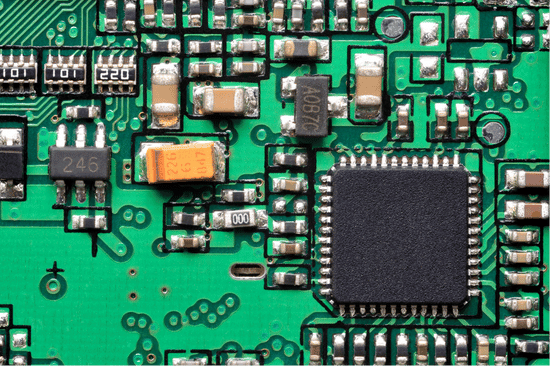
Properties and Overview of Parylene Type C
Overview:
 Parylene Type C is a unique class of polymer coatings known for its exceptional protective properties, including chemical resistance, biocompatibility, and uniform thickness. Parylene is widely used as a conformal coating in industries requiring reliable and durable protection for sensitive components, such as electronics, medical devices, and aerospace systems. Its ability to form a pinhole-free, ultra-thin film distinguishes it from other coatings, making it indispensable in applications where precision and performance are critical.
Parylene Type C is a unique class of polymer coatings known for its exceptional protective properties, including chemical resistance, biocompatibility, and uniform thickness. Parylene is widely used as a conformal coating in industries requiring reliable and durable protection for sensitive components, such as electronics, medical devices, and aerospace systems. Its ability to form a pinhole-free, ultra-thin film distinguishes it from other coatings, making it indispensable in applications where precision and performance are critical.
Production:
The production of Parylene coatings involves a vapor deposition polymerization process. This begins with vaporizing a powdered dimer, which is then pyrolyzed into a reactive monomeric gas. The monomer gas condenses onto the substrate at room temperature, forming a uniform, conformal coating layer. This chemical vapor deposition (CVD) process ensures that Parylene coats every surface, including complex geometries, with unmatched consistency and adhesion. Variants of Parylene, such as Parylene C, N, and D, offer tailored properties for specific applications, such as enhanced chemical resistance or higher thermal stability.
Applications:
Parylene is widely used across diverse industries due to its robust protective capabilities. In electronics, it serves as an insulating and protective layer for circuit boards, sensors, and delicate components, ensuring reliability in harsh environments. The medical field relies on Parylene for coating implants, surgical instruments, and diagnostic devices, where its biocompatibility and resistance to sterilization processes are crucial. In aerospace and defense, Parylene is applied to components exposed to extreme conditions, such as moisture, radiation, and high temperatures, where its durability and low permeability are essential. Additionally, Parylene is used in automotive, optics, and MEMS (Micro-Electro-Mechanical Systems), where its thinness and performance enhance functionality without adding bulk or weight.
Summary:
Parylene is a highly versatile and reliable polymer coating that provides exceptional protection and precision across various demanding applications. Its ability to deliver uniform, pinhole-free coverage and its adaptability to diverse industries ensure its ongoing importance in modern engineering and manufacturing. As technology advances and industries prioritize durability and reliability, Parylene remains a critical solution for addressing complex challenges in protective coatings, driving innovation in performance and sustainability. Its unique properties and broad applications highlight its significance as a cornerstone material in advanced protective solutions.
See a comprehensive list of electrical, mechanical, physical and thermal properties for Parylene Type C below:
Electrical Properties of Parylene Type C
Unfamiliar with a property? Click it's description to be given a full definition in the GLOSSARY
See properties and overview for
ALLOYS and CHEMICAL ELEMENTS
popular in engineering
Require different units not displayed?
CONVERT VARIOUS UNITS HERE
Mechanical Properties of Parylene Type C
Unfamiliar with a property? Click it's description to be given a full definition in the GLOSSARY
See properties and overview for
ALLOYS and CHEMICAL ELEMENTS
popular in engineering
Require different units not displayed?
CONVERT VARIOUS UNITS HERE
Physical Properties of Parylene Type C
| Physical Property (Units) | Value |
|---|---|
| Parylene Type C Boiling Point at Atmospheric Pressure (°C) | Decomposes |
| Parylene Type C Chemical Composition (Element %) | (C8H7Cl)n |
| Parylene Type C Cost ($/kg) | 500 to 1000 |
| Parylene Type C Density at 'Standard Temperature and Pressure' (kg/m3) | 1290 |
| Parylene Type C Glass Transition Temperature at Atmospheric Pressure (°C) | 60 to 80 |
| Parylene Type C Melting Point at Atmospheric Pressure (°C) | 290 |
| Parylene Type C Polymer Family | Thermoplastic |
| Parylene Type C Refractive Index | 1.64 |
| Parylene Type C Specific Gravity | 1.29 |
| Parylene Type C Viscosity at Melting Point (mPa·s) | Unknown |
Unfamiliar with a property? Click it's description to be given a full definition in the GLOSSARY
See properties and overview for
ALLOYS and CHEMICAL ELEMENTS
popular in engineering
Require different units not displayed?
CONVERT VARIOUS UNITS HERE
Thermal Properties of Parylene Type C
| Thermal Property (Units) | Value |
|---|---|
| Parylene Type C Coefficient of Thermal Expansion (µm/m·K) | 5 to 10 |
| Parylene Type C Emissivity Coefficient | 0.9 |
| Parylene Type C Specific Heat Capacity (J/kg·K) | 1000 |
| Parylene Type C Thermal Conductivity (W/m.K) | 0.084 |
| Parylene Type C Thermal Conductivity (BTU/h·ft·°F) | 0.05 |
Unfamiliar with a property? Click it's description to be given a full definition in the GLOSSARY
See properties and overview for
ALLOYS and CHEMICAL ELEMENTS
popular in engineering
Require different units not displayed?
CONVERT VARIOUS UNITS HERE
 ADDED TO MY FAVORITES!
ADDED TO MY FAVORITES! REMOVED FROM MY FAVORITES!
REMOVED FROM MY FAVORITES!